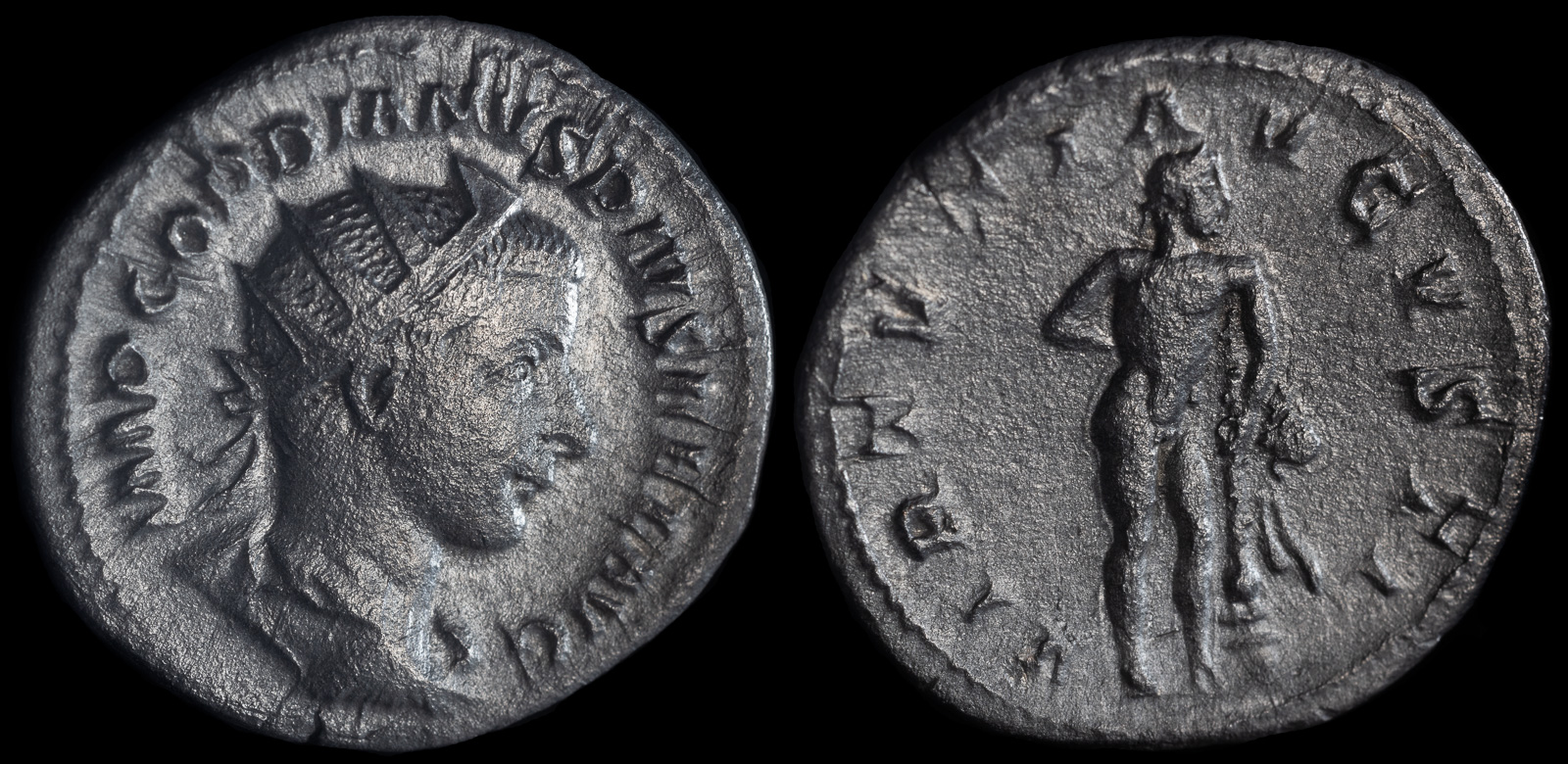
Macrinus
Moesia, Nicopolis ad Istrum
217–218 CE
Æ 27mm, 12.51 gm, 6h
Obv: Laur. bust r.
Rev. Herakles standing r., right hand behind his back, holding club set on rock, lion skin draped over club.
Varbanov 3457. HrHJ (2015) 8.23.14.3
Perhaps no ancient statue is more depicted on ancient coins than the Farnese Herakles. Indeed, when I was building this collection I initally passed on some examples because I thought I already had the type.
The version we know best, which sits in the Museo Archeologico Nazionale in Naples, is actually a copy that was produced in Athens and signed by Glykon, who is otherwise unknown. The original was made of bronze by Lysippos and made in the 4th century BCE. That one survived all the way until the Sack of Constantinople in 1205, when it was melted down by moronic Crusaders.
The Naples copy was made for the Baths of Caracalla and unearthed in 1546, when it caused a sensation. The pose of Herakles leaning against his club with the skin of the Nemean lion over it is overpowering. Behind his back he holds two apples, a link to the Hesperides labor, though they’re not depicted on any coinage I’m aware of. There is the possibility that my example, due to the angle, may depict them, but I don’t see any traces.
The sculpture gets its name because the Naples copy was acquired by Cardinal Alessandro Farnese, grandson of Pope Paul III, where it was given its own room. Michelangelo, though he didn’t work directly on the restoration, provided advice on it and was presumably moved by the piece.
It has had a profound affect on civilization. Rubens sketched it. Napoleon listed it as the sculpture he most wanted, and it was nearly sent to him several times. Clearly, it was treasured in ancient times, based simply on the number of ancient coins that depict it. A number of copies have been discovered, and the Louvre and Athens Archeological Museum possess notable examples.

Gordian III
Rome 238-244 CE
AR Antoninianus 23mm, 4,76g
Obv: IMP GORDIANVS PIVS FEL AVG.
Radiate, draped and cuirassed bust right.
Rev: VIRTVTI AVGVSTI. The Farnese Hercules: statue of Hercules right, with Apples of the Hesperides and lion skin, and leaning upon club